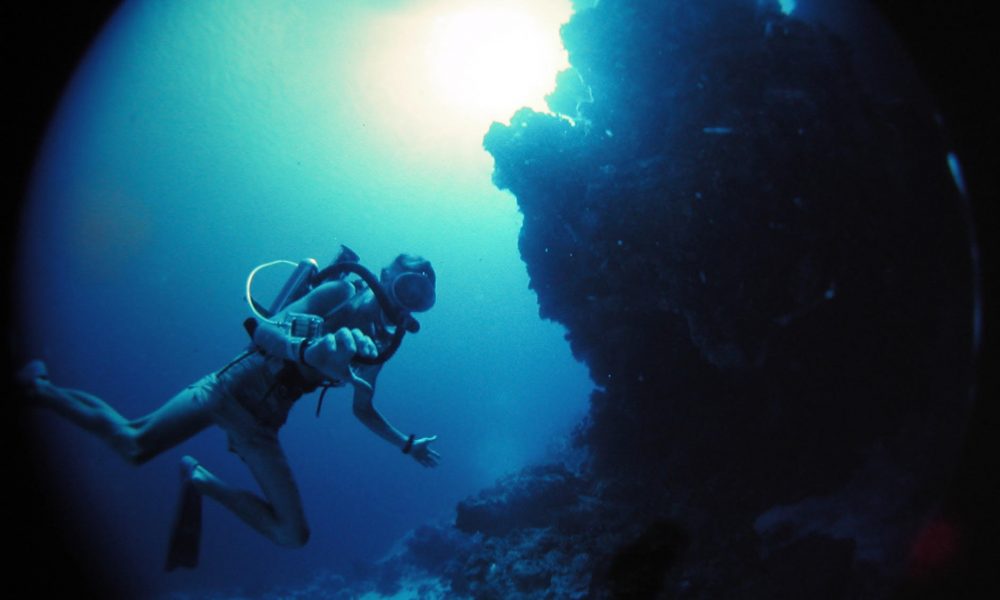AfterDark
Contributor
Dove that way for about 10 years when I started.Try diving without a SPG by calculating your planned depth and bottom time knowing you only have a single steel 72 cubic foot tank rated service pressure at 2250.
Welcome to ScubaBoard, the world's largest scuba diving community. Registration is not required to read the forums, but we encourage you to join. Joining has its benefits and enables you to participate in the discussions.
Benefits of registering include
Dove that way for about 10 years when I started.Try diving without a SPG by calculating your planned depth and bottom time knowing you only have a single steel 72 cubic foot tank rated service pressure at 2250.
What year was that? Was it 1998 or is that the date of the writing? I ask because 1998 falls short of the 50 years I mentioned. Those don't look microchips to me. More like transistors, chips were still a long way off. Just like the technology that will make CCRs common place someday, a long way off and unknown to us at this time.Lots of people saw it:
The GE Mark 10 was operational several years later.
Pretty interesting history in Wikipedia under Integrated Circuit.What year was that? Was it 1998 or is that the date of the writing? I ask because 1998 falls short of the 50 years I mentioned. Those don't look microchips to me. More like transistors, chips were still a long way off. Just like the technology that will make CCRs common place someday, a long way off and unknown to us at this time.
According to Rebreather History: From Conception to the Modern Era (1680-2012) - DIVER magazineWhat year was that? Was it 1998 or is that the date of the writing? I ask because 1998 falls short of the 50 years I mentioned. Those don't look microchips to me. More like transistors, chips were still a long way off. Just like the technology that will make CCRs common place someday, a long way off and unknown to us at this time.
What year was that? Was it 1998 or is that the date of the writing?
Development of the Electrolung came about through the chance meeting of John Kanwisher and I aboard Ed Link's diving research vessel in the Bahamas in early 1968. Ed was trying out his new diver lock-out submarine Deep Diver and had invited along several researchers with relevant interests.

 gue.com
gue.com

Why does it matter that it used discrete transistors (and other electronic components) instead of the integrated transistors (and other electronic components) that are used in microchips?
???I'm very surprised at how few people voted for the octopus.
Before the octopus, if you had a second stage failure you would die basically if you didn't have a buddy near you.
The Cressi ARO 57b was even simpler: a rubber bag, a filter, a single corrugate hose and a 1.5-liters oxygen tank with a manual "press to erogate" valve.@Angelo Farina
I never doubted the accuracy of your cost estimates, I'm just wondering what factors caused such a difference. Was there a regulator on the Cressi ARO 57B or did you manually open an HP valve to replenish the bag?
For other readers:
Pure oxygen rebreathers of that era were little more than a rubber bag, harness, absorbent canister, HP Oxygen cylinder, 1-2 courigaged hoses, a mouthpiece, and some mushroom check valves.
From a manufacturing cost perspective, they were a tiny fraction what we think of today as a rebreather. No electronics, diluent, second bag, alarm lights, backup gas, or concern over decompression.
It doesn't matter all. However, what I posted was based on nobody seeing the use of microchips 50 years ago in CCRs not transistors in 1998. A lot of other things we take for granted didn't even register as possible 50 years.According to Rebreather History: From Conception to the Modern Era (1680-2012) - DIVER magazine
"1969: Walter Stark introduces the ‘ElectroLung’ mixed gas rebreather for $2,500, subsequently bought by Beckman Instruments. Beckman shuts down division in 1970 after a number of fatalities."
Why does it matter that it used discrete transistors (and other electronic components) instead of the integrated transistors (and other electronic components) that are used in microchips?
